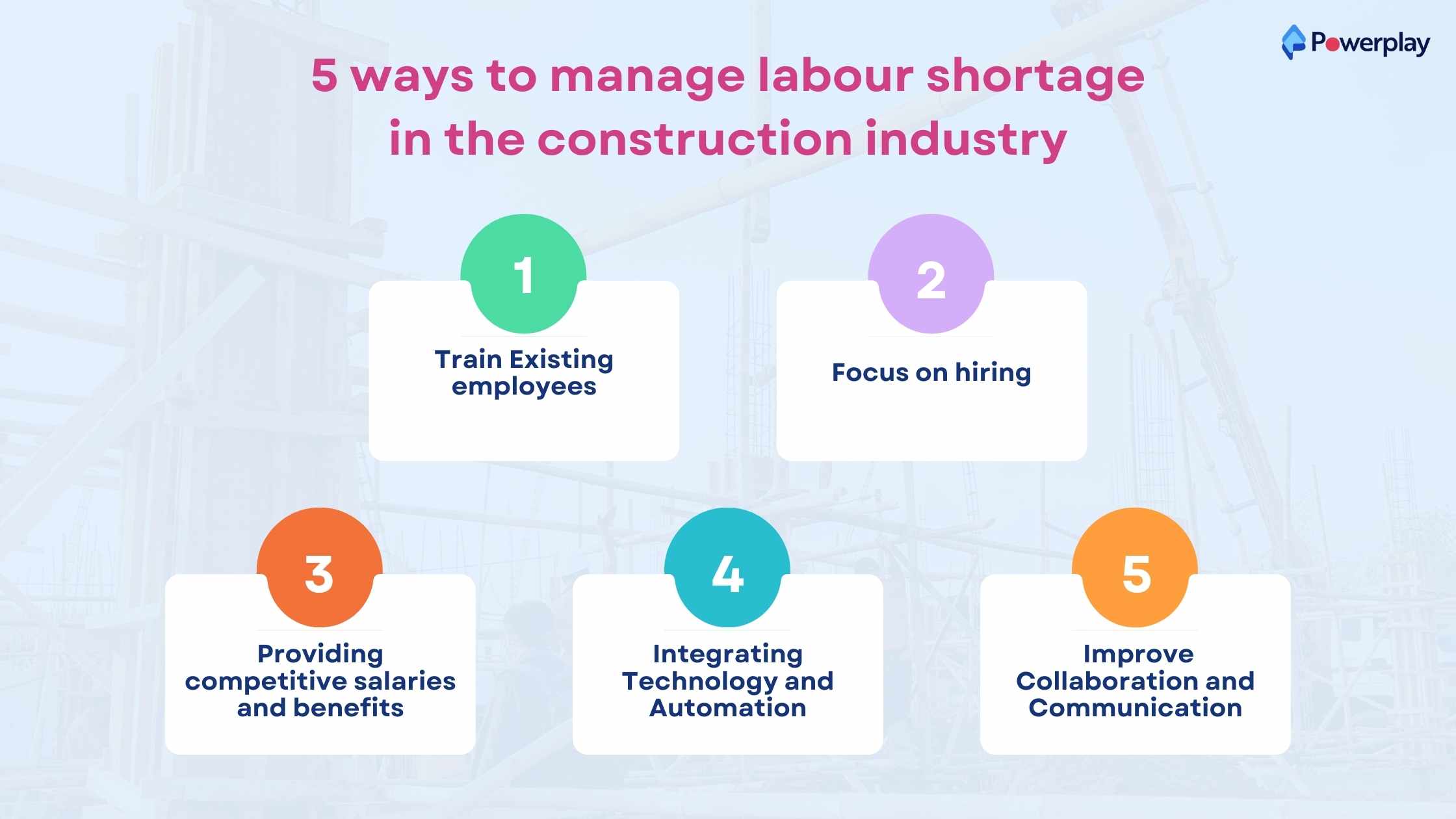How to manage labour shortage in the construction industry?
-
Kumar Abhishek Anand
- October 12, 2023

The construction industry’s biggest problem has been labour shortages in recent years. Despite the industry’s steady growth, companies are still having difficulty filling key positions at the construction site, which means they are in danger of missing out on opportunities or prolonging project timeframes. What is the main reason behind this huge labour shortage?
Table of Contents
ToggleCause of labour shortage in 2022 in the construction sector
Construction managers in India complain about the difficulties of finding enough skilled workers. The majority of highly skilled people have left for better opportunities in countries with rich economies, such as that of the Middle Eastern Gulf. In addition, with these economies experiencing a slowdown, this sector is sucked into labour market issues. Other reasons are:
1. One of the main elements is the perception of the industry. Newcomers to the workforce or contemplating their future career paths aren’t attracted to the field.
2. Many people raised in the industry are growing more old-fashioned and are retiring or have decided to leave the field to find a more physical job. The workers aren’t getting replaced as frequently as they’re losing.
Five ways to manage labour shortage in the construction industry

1. Train Existing employees
Construction technology is modern and dynamic with new construction codes, materials, techniques, and tools being introduced almost daily. To stay competitive, construction firms must be ready to change to the demands of these developments and developments.
Because of the current shortage of workers, you may not be able to locate an expert when you require one. Therefore, why not dive into your current workforce and train them? While your main concern may be attracting skilled employees to perform high-quality work, training also can greatly affect employee retention.
The training programs you offer can demonstrate to employees that your business values their personal development and, as a result, you’ll create a loyal employee. In your industry, today’s employees require incentives and opportunities to work and develop professionally through training opportunities.
Numerous programs and courses can provide important or advanced training for workers. Workers can be taught everything from working with heavy equipment to safety techniques. Additionally, outsourcing training could be a great option if you don’t have the staff or the time.
To reap the greatest advantages, a corporate-wide training program that meets your specific needs could be helpful.

It is well-known that the process of hiring employees is time-consuming and difficult. To make hiring easier, take into consideration the following:
a. Employing an employment agency to perform all the tasks in finding employees. This will allow you to spend more time to ensure you’re improving your existing workers while others are being evaluated and the finding process is more smooth.
b. Let the world know that you’re hiring. Consider posting positions on well-known job boards.
c. Make sure you let your employees know you’re hiring and offer incentive payments to employees who recruit successful workers.
3. Providing competitive salaries and benefits.
Benefits packages are among the primary factors employees look at when choosing an employer to join, and they also decide if employees are likely to stay. With a good paid time off, high-quality wage rates, and training oppurtunities, workers will be more likely to pay attention to the business culture you promote. It is important to ensure that your advantages stand out

In certain regions, there are shortages of skilled tradesmen who are skilled due to the huge demand for labourers. Apart from offering more benefits, you can also offer additional incentives like flexible hours that allow people to get to the door.
4. Integrating Technology and Automation
When companies begin to think about adopting new technology, there is lingering fear among many employees, fearing that they’ll be displaced and replaced with robots. As you can see what modern machines can accomplish these days, the anxiety is understandable but without merit. Construction technology is developed to simplify the work routine so that your workers work better, not harder.

Although automation and construction technology are relatively new to the field, the recent pandemics have accelerated their use. Businesses want to finish their projects with fewer people, so they invest heavily in different construction technology to accomplish their goals. Many construction workers have been excited over the potential that technology can offer to combat labour shortages.
Construction tools, software and machinery can help optimize workflows and even reduce the time required to finish the task. Construction technology can help reduce the chance of injuries resulting from work that is repetitive or high-risk (work at high levels).
You may be cautious about investing in the construction technology field due to the initial investment cost. These costs can be lowered since you don’t need to be concerned about employee benefits, compensation, etc. Additionally, machines are more efficient since they don’t need to take breaks or go on vacations.
5. Improve Collaboration and Communication
In simple terms, how communication is conducted during a construction project could affect retention rates and, ultimately, the performance of a construction project, as two construction workers demonstrate at a construction forum.

One key aspect in deciding on an employment opportunity is the workplace culture or how people interact at work. While they are usually on their own when they need to work with others, the most crucial factor is connecting with those who understand their workflow and can share vital details. This is exactly what being “in sync” is about
Share
Kumar is a digital content professional with more than 2 years of experience in Blog writing, copywriting and scripting. His passion lies in the art of creating convincing content that plays a major role in converting leads for SAAS businesses.












